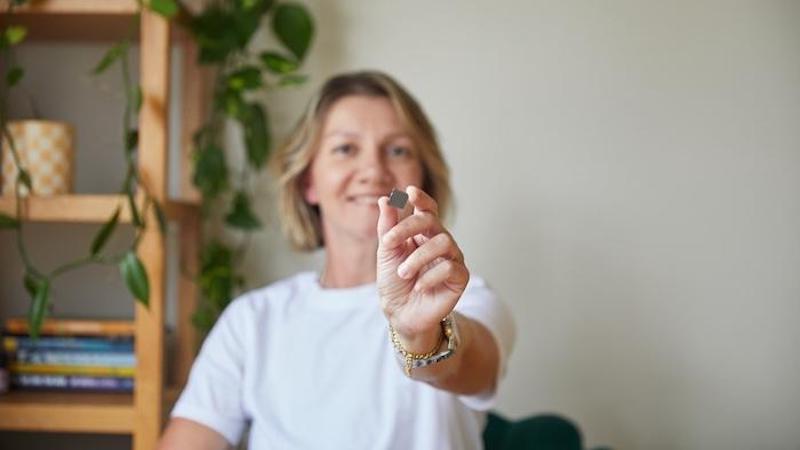A team of Australian and international scientists has, for the first time, created a full picture of how errors unfold over time inside a quantum...
Vous n'êtes pas connecté
- English
- Français
- عربي
- Español
- Deutsch
- Português
- русский язык
- Català
- Italiano
- Nederlands, Vlaams
- Norsk
- فارسی
- বাংলা
- اردو
- Azərbaycan dili
- Bahasa Indonesia
- Հայերեն
- Ελληνικά
- Bosanski jezik
- українська мова
- Íslenska
- Türkmen, Түркмен
- Türkçe
- Shqip
- Eesti keel
- magyar
- Қазақ тілі
- Kalaallisut ; kalaallit oqaasii
- Lietuvių kalba
- Latviešu valoda
- македонски јазик
- Монгол
- Bahasa Melayu ; بهاس ملايو
- ဗမာစာ
- Slovenščina
- тоҷикӣ ; toğikī ; تاجیکی
- ไทย
- O'zbek ; Ўзбек ; أۇزبېك
- Tiếng Việt
- ភាសាខ្មែរ
- རྫོང་ཁ
- Soomaaliga ; af Soomaali
Rubriques :
 Maroc - EURASIAREVIEW.COM - A la une - 22/06/2024 22:29
Maroc - EURASIAREVIEW.COM - A la une - 22/06/2024 22:29
A Quantum World On A Silicon Chip
The quantum internet would be a lot easier to build if we could use existing telecommunications technologies and infrastructure. Over the past few years, researchers have discovered defects in silicon — a ubiquitous semiconductor material —; that could be used to send and store quantum information over widely-used telecommunications wavelengths. Could these defects in silicon be the best choice among all the promising candidates to host qubits for quantum communications? "It’s still a Wild West out there,” said Evelyn Hu, the Tarr-Coyne Professor of Applied Physics and of Electrical Engineering at the Harvard John A. Paulson School of Engineering and Applied Sciences (SEAS). “Even though new candidate defects are a promising quantum memory platform, there is often almost nothing known about why certain recipes are used to create them, and how you can rapidly characterize them and their interactions, even in ensembles. And ultimately, how can we fine-tune their behavior so they exhibit identical characteristics? If we are ever to make a technology out of this wide world of possibilities, we must have ways to characterize them better, faster and more efficiently.” Now, Hu and a team of researchers have developed a platform to probe, interact with and control these potentially powerful quantum systems.; The device uses a simple electric diode, one of the most common components in semiconductor chips, to manipulate qubits inside a commercial silicon wafer.; Using this device, the researchers were able to explore how the defect responds to changes in the electric field, tune its wavelength within the telecommunications band and even turn it on and off. “One of the most exciting things about having these defects in silicon is that you can use well-understood devices like diodes in this familiar material to understand a whole new quantum system and do something new with it,” said Aaron Day, a Ph.D. candidate at SEAS. Day co-led the work with Madison Sutula, a research fellow at Harvard.; While the research team used this approach to characterize defects in silicon, it could be used as a diagnostic and control tool for defects in other material systems.; The research is published in Nature Communications. Quantum defects, also known as color centers or quantum emitters, are imperfections in otherwise perfect crystal lattices that can trap single electrons. When those electrons are hit with a laser, they emit photons in specific wavelengths. The defects in silicon that researchers are most interested in for quantum communications are known as G-centers and T-centers. When these defects trap electrons, the electrons emit photons in a wavelength called the O-band, which is widely used in telecommunications. In this research, the team focused on G-center defects. The first thing they needed to figure out was how to make them. Unlike other types of defects, in which an atom is removed from a crystal lattice, G-center defects are made by adding atoms to the lattice, specifically carbon. But Hu, Day and the rest of the research team found that adding hydrogen atoms is also critical to consistently forming the defect.; Next, the researchers fabricated electrical diodes using a new approach which optimally sandwiches the defect at the center of every device without degrading the performance of either the defect or the diode.; The fabrication method can create hundreds of devices with embedded defects across a commercial wafer. Hooking the whole device up to apply a voltage, or electric field, the team found that when a negative voltage was applied across the device, the defects turned off and went dark. “Understanding when a change in environment leads to a loss of signal is important for engineering stable systems in networking applications,” said Day, The researchers also found that by using a local electric field, they could tune the wavelengths being emitted by the defect, which is important for quantum networking when disparate quantum systems need to be aligned.; The team also developed a diagnostic tool to image how the millions of defects embedded in the device change in space as the electric field is applied. “We found that the way we’re modifying the electric environment for the defects has a spatial profile, and we can image it directly by seeing the changes in the intensity of light being emitted by the defects,” said Day. “By using so many emitters and getting statistics on their performance, we now have a good understanding of how defects respond to changes in their environment. We can use that information to inform how to build the best environments for these defects in future devices. We have a better understanding of what makes these defects happy and unhappy.” Next, the team aims to use the same techniques to understand the T-center defects in silicon.
Articles similaires
Hidden memory in quantum computers explains why errors keep coming back
Quantum computers may look futuristic, but inside them, tiny mistakes are quietly piling up and remembering each other. A new breakthrough by...
Hidden memory in quantum computers explains why errors keep coming back
Quantum computers may look futuristic, but inside them, tiny mistakes are quietly piling up and remembering each other. A new breakthrough by...
US scientists use quantum chemistry to enable chlorine-free water disinfection
US scientists have taken a major step towards supplying hospitals and treatment facilities with safer chlorine-free water disinfection by identifying...
‘Invisible’ processes of quantum standard volt visualized in a first with ultracold atoms
Some of the most important quantum effects powering today’s technology happen on scales that are almost impossible to see. One such phenomenon,...
Lighting Strongly Influences People’s Experience While Listening To Music
When you go to your next concert or listen to your favorite music on an app, you might first consider the lighting around you. Music is widely...
‘Badass’ bacteria that colonize fresh lava could help probe life on other planets
Whether it is a forest regrowing from the ashes or a new island being colonized by the wind and rain, nature operates on a clock of constant renewal....
‘Badass’ bacteria that colonize fresh lava could help probe life on other planets
Whether it is a forest regrowing from the ashes or a new island being colonized by the wind and rain, nature operates on a clock of constant renewal....
Mars’ Salty Secrets: How Ancient Brines Imprinted Their Chemical Fingerprints In Martian Minerals
New experiments reveal jarosite’s selective bromine capture under Mars-like conditions, offering a fresh lens to decode the Red Planet’s aqueous...
Electrodes Created Using Light
Visible light can be used to create electrodes from conductive plastics completely without hazardous chemicals. This is shown in a new study carried...
Les derniers communiqués
-
Nvidia prepares to resume H200 chip exports to China
Nvidia - 22/12/2025
-
Criminal Illegal Alien Viciously Bites ICE Officer While Resisting Arrest in Louisiana
The Department of homeland security - 12/12/2025
-
American Airlines invites AAdvantage members to help make a dierence this Giving Tuesday
AMERICAN AIRLINES - 01/12/2025
-
American Airlines to present at Goldman Sachs and Bernstein conferences
AMERICAN AIRLINES - 26/11/2025
-
American Airlines gets ready to unwrap deals for travelers this holiday season
AMERICAN AIRLINES - 25/11/2025
-
Belkin Expands Audio Range in the Middle East with SoundForm Anywhere True Wireless Earbuds
Belkin - 24/11/2025
-
Border Patrol Agents Face Shots Fired, Vehicle Rammings, Bricks Thrown in Chicago on Saturday
Amazon Web Service - 09/11/2025
-
Border Patrol Agents Face Shots Fired, Vehicle Rammings, Bricks Thrown in Chicago on Saturday
The Department of homeland security - 09/11/2025
-
ICE Arrests Worst of the Worst Criminal Illegal Aliens Including Pedophiles, Rapists and Violent Assailants
The Department of homeland security - 07/11/2025
-
DHS Sets the Record Straight on Misleading Video, Leaving Out Key Facts Including that the Woman Arrested Repeatedly Stabbed Her Coworker with Scissors
The Department of homeland security - 07/11/2025



